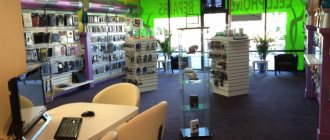Profitable investments in material assets are... (PBU)
An enterprise may have a variety of assets: real estate, cash, intangible assets, machines and other property. If an asset brings income to a businessman for more than 1 year, then it is non-current. In accordance with clause 20 of PBU 4/99, non-current assets include fixed assets, intangible assets, financial investments and profitable investments in tangible assets.
You can find out more about non-current assets in the material “Rules for keeping records of investments in non-current assets” .
Profitable investments in assets are fixed assets (fixed assets) of a company, which differ from other assets in that they are purchased not for use in production, but for renting or leasing. To account for such property, account 03 is intended - Income investments in tangible assets, which is located in section 1 “Non-current assets” in the Chart of Accounts (Order of the Ministry of Finance dated October 31, 2000 No. 94n).
On account 03, profitable investments in material assets are accounted for at their original cost, which is formed similarly to the rules established for fixed assets, the accounting procedure for which is regulated by PBU 6/01. This means that the cost of investments includes expenses:
- for the purchase of an asset (less VAT and other refundable taxes);
- third-party pre-purchase consulting services;
- intermediary remuneration;
- delivery of attachments;
- customs duties and fees.
Depreciation of property accounted for in account 03 is carried out according to the rules established for fixed assets and is reflected in the corresponding subaccount of account 02.
When disposing of investments, a sub-account “Disposal of material assets” can be opened to account 03.
Analytical accounting for the Income Investments in Material Assets account is maintained by type of asset and tenant.
What it is?
Profitable investments in material assets are investments of an enterprise in equipment, real estate, property and other assets , which are expressed in tangible form and are provided for temporary use to third parties for the purpose of extracting economic benefits (in other words, these are investments in assets that are acquired for subsequent rental or leasing).
The company's profit is an increase in economic benefits due to the receipt of cash, as well as the repayment of debt obligations, which led to an increase in capital.
In this case, the following receipts from individuals and organizations will not be recognized as income of the enterprise:
- export duties, value added tax amounts and other mandatory payments;
- under agency and other similar agreements;
- advance payment for goods, services and works;
- pledged property, if its subsequent transfer to the pledgee is provided for;
- funds used to pay off debts.
The company's receipts are classified depending on the conditions of receipt and features:
- income from standard activities;
- operating rooms;
- non-operating.
Income that differs from profit from standard activities is recognized as other income.
How to draw up a notice of starting a business activity - see here.
Postings to account 03 “Profitable investments in material assets”
When purchasing property that is supposed to be taken into account as an income-generating investment, it first goes to account 08. All expenses are collected on the same account, which will then be included in the cost of the investment. As soon as the object is completely ready for rent or leasing, the accountant will post Dt 03 Kt 08.
The company continues to account for the leased property as its own asset in account 03 and accrue depreciation on it (clause 50 of the Methodological Instructions approved by Order of the Ministry of Finance dated October 13, 2003 No. 91n). Depreciation of income investments in material assets is reflected by the entry Dt 02 Kt 03.
When selling or any other disposal of investments, entries must be made in the accounting subaccount “Disposal of material assets”:
- the debit will reflect the cost of the retiring asset: Dt 03 (sub-account “Disposal of material assets”) Kt 03 - the initial cost of the asset is written off;
- for the loan - accumulated depreciation: Dt 02 Kt 03 (sub-account “Disposal of material assets”).
The residual value of the asset is written off as follows:
Dt 91 Kt 03 subaccount “Disposal of material assets”.
Account 03. Accounting of transactions using examples
For a detailed examination of the features of accounting for transactions on account 03, we use examples of typical situations.
Account 03. Renting out your own equipment
Example No. 1.
Let’s say that JSC “Kolosok” purchased from LLC “Selkhoztekhnik” a machine and tractor unit for pre-sowing tillage at a price of 484,620 rubles, VAT 73,925 rubles. On March 25, 2016, Kolosok entered into a leasing agreement with Fermer LLC, according to which the tractor was leased. The useful life of the machine-tractor unit is set at 7 years.
The Koloska accountant reflected the transactions of purchasing a tractor and leasing it as follows:
| Debit | Credit | Operation description | Sum | A document base |
| 08 | 60 | The amount of expenses for a tractor purchased from Selkhoztekhnik LLC for subsequent leasing is taken into account (RUB 484,620 – RUB 73,925) | RUR 410,695 | Sales contract, delivery note |
| 19 | 60 | The amount of VAT on the cost of the purchased machine and tractor unit is taken into account | RUR 73,925 | Invoice |
| 60 | 51 | Payment was made to “Agricultural Equipment” for the purchased tractor | RUR 484,620 | Payment order |
| 03 Property owned | 08 | A tractor purchased from Selkhoztekhnik LLC was registered for subsequent leasing | RUR 410,695 | Transfer and Acceptance Certificate |
| 68 VAT | 19 | The amount of VAT on the purchased tractor is accepted for deduction | RUR 73,925 | Invoice |
| 03 Property under lease | 03 Property owned | The tractor was transferred to “Farmer” under a lease agreement | RUR 410,695 | Transfer and Acceptance Certificate |
| 20 | 02 | The amount of depreciation accrued on the machine and tractor unit for April 2020 is reflected (RUB 410,695 / 7 years / 12 months) | RUB 4,889 | Depreciation statement |
Example No. 2.
Let's consider a situation where, when purchasing property for leasing, an organization incurred additional expenses paid through an accountable person.
The activities of JSC “Kladovshchik” are related to the rental of warehouses and other utility premises.
In February 2020 “Storekeeper”:
- purchased premises for a food warehouse from JSC Monolit at a price of 1,240,600 rubles, VAT 189,244 rubles;
- paid the expenses for registration of the premises in the amount of 2,760 rubles, the amount of which was paid through an employee of JSC “Storekeeper” Isaev V.R.;
- leased the warehouse to Products Plus LLC.
It has been established that the useful life of the warehouse premises is 11 years.
Here is how the above operations were reflected in the “Storekeeper” accounting:
| Debit | Credit | Operation description | Sum | A document base |
| 08 | 60 | The amount of expenses for a food warehouse purchased from Monolit for subsequent leasing is taken into account (1,240,600 rubles - 189,244 rubles) | RUB 1,051,356 | Purchase and sale agreement, transfer and acceptance certificate, certificate of ownership |
| 19 | 60 | The amount of VAT on the cost of purchased warehouse premises is taken into account | RUR 189,244 | Invoice |
| 60 | 51 | A settlement has been made with Monolit JSC | 1,240,600 rub. | Payment order |
| 71 | 50 | Isaev was given an advance for household needs (calculations for the design of a warehouse) | RUB 2,760 | Account cash warrant |
| 08 | 71 | Savelyev received permits for the premises | RUB 2,760 | Advance report |
| 03 Property owned | 08 | The cost of the premises is reflected as part of income-generating investments (RUB 1,051,356 + RUB 2,760) | RUB 1,054,116 | Purchase and sale agreement, transfer and acceptance certificate, certificate of ownership, permitting documents |
| 68 VAT | 19 | VAT deduction on purchased premises has been taken into account | RUR 189,244 | Invoice |
| 03 Property under lease | 03 Property owned | The transfer of the warehouse to the use of LLC “Products Plus” is reflected | RUB 1,054,116 | Transfer and Acceptance Certificate |
| 20 | 02 | The amount of accrued depreciation for the leased premises was carried out (RUB 1,054,116 / 11 years / 12 months) | RUR 7,986 | Depreciation statement |
An example of accounting for investments in material assets and the order of reflection in the balance sheet
Let's look at the situation using an example:
Fantasia LLC (works for OSN, produces food products) bought the building in November 2020 in order to rent it out. The transaction price is 18 million rubles. (including VAT RUB 2,745,762.71). Plus, the company paid the real estate company for assistance in choosing a building and processing documents RUB 131,865.37. (including VAT RUB 20,115.06). In the same month, the company registered ownership of the property and paid a fee of 12,000 rubles. The commissioning of the property was carried out in November 2020. In December of the same year, Fantasia leased the building to IP Skvortsov. In the accounting, the accountant of Fantasia LLC made the following entries:
- Dt 08 Kt 60 in the amount of RUB 15,254,236.29. — the purchase price of the building is reflected minus VAT;
- Dt 19 Kt 60 in the amount of RUB 2,745,763.71. — VAT on the building is reflected;
- Dt 08 Kt 60 in the amount of RUB 111,750.31. — expenses for realtor services are reflected;
- Dt 19 Kt 60 in the amount of 20,115.06 rubles. — VAT on realtor services is reflected;
- Dt 08 Kt 68 in the amount of 12,000 rubles. — state duty for registering the building has been charged;
- Dt 03 accounts - Profitable investments in material assets for rent - Kt 08 in the amount of 15,377,986.60 rubles. — reflects the initial cost of the building.
- Dt 03 accounts - Income-earning investments in material assets leased out, analytics of IP Skvortsov Kt 03 accounts - Income-earning investments in material assets for rent - 15,377,986.60 rubles. — the building was leased to IP Skvortsov.
To calculate depreciation for the building, the accountant of Fantasia LLC determined the useful life of the property in accordance with the “Classification of fixed assets included in depreciation groups” (Resolution of the Government of the Russian Federation dated January 1, 2002 No. 1). This kind of real estate belongs to the 9th group, the useful life is 30 years. The depreciation method is linear. Then the amount of monthly depreciation for the building will be 15,377,986.60 rubles. / 360 months = 42,716.63 rub. In accounting, the accountant will reflect depreciation for December 2020 as follows:
- Dt 91.2 Kt 02 “Depreciation of profitable investments in material assets” in the amount of 42,716.63 rubles. — depreciation is taken into account as part of the company’s expenses.
Income-generating investments in tangible assets are displayed in the balance sheet at their residual value on line 1160. The residual value is determined by reducing the initial value of the asset (debit balance of account 03 - Income-earning investments in tangible assets) by the amount of depreciation taken into account in expenses (credit balance of account 02 for these assets) . In the example conditions, the value of the building's valuation, which should be displayed in Form 1 as of December 31, 2016, will be RUB 15,335,269.37. (15,337,986 – 42,716.63 rubles).
For information on how to fill out a balance sheet, read the article “Procedure for drawing up a balance sheet (example)” .
Features of profitable investments
The essence of profitable investments is obvious from their name. These are company contributions that are made specifically for profit. The funds will be received not indirectly, as from fixed assets, but directly. For example, a company purchased retail space specifically to rent it out in the future. The company receives a monthly profit.
It is assumed that the income from such investments will be guaranteed. For example, when purchasing real estate, managers can be sure that it will bring profit.
Results
Assets intended for rental are recorded by the company in account 03 - Income-generating investments in tangible assets.
In the account - Income-generating investments in tangible assets - property is accounted for according to rules similar to those for accounting for assets in account 01: before putting it into operation, you need to take into account all costs related to the property, and subsequently calculate depreciation. You can find more complete information on the topic in ConsultantPlus. Full and free access to the system for 2 days.
The meaning of the term “income investment”
Income investments (II) in material assets are the company’s investments in equipment, various objects, valuables, and real estate. They differ in two main features:
- Expression in material form.
- Providing purchased properties for rent to other companies to generate income.
Fixed assets of an enterprise intended for rent are recorded in the financial statements and are included in income-generating investments.
The goal of every company is to make a profit. However, receipts from other organizations and individuals related to the following circumstances cannot be considered income:
- tax paid on value added;
- payments arising on the basis of agency and other documents;
- prepayment for services rendered, goods supplied;
- finding collateral property with the enterprise, which will be returned to the pledge holder;
- funds that will be used to cover obligations.
Company income is divided into several categories. The classification arises based on the sources of profit:
- Profit from the main activity of the enterprise.
- Operating income.
- Non-operating income.
Other forms of profit will be called other income.








